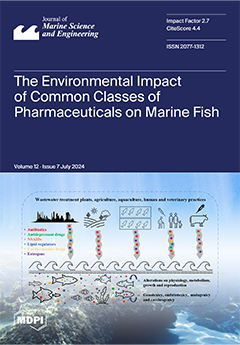This article is about the diversity of diatoms in the benthos of the upper sublittoral near Kazantip Cape, located on the shore of the Sea of Azov in the northeastern part of Crimea. The study was conducted in 2022 and 2023 at a depth of 0.1 to 1 m at temperatures from 3.7 °C to 29 °C and salinity from 13.6 to 15.6 psu on the following 11 species of macroalgae: Phaeophyta of
Ericaria crinita,
Gongolaria barbata, and
Cladosiphon mediterraneus; Chlorophyta—
Bryopsis hypnoides,
Cladophora liniformis,
Ulva intestinalis, and
Ulva linza; and Rhodophyta—
Callithamnion corymbosum,
Ceramium arborescens,
Polysiphonia denudata, and
Pyropia leucosticta. A total of 97 taxa of Bacillariophyta belonging to 3 classes, 21 orders, 30 families, and 45 genera were found. The highest number of diatom species was found on
U. linza (61 species),
P. denudata (45),
E. crinita (40), the lowest number was recorded on thalli
P. leucosticta (9). On macroalgae were found of 80% benthic diatoms, 50% marine species, 36% brackish-marine, 9% freshwater, 5% brackish, and 36% cosmopolites. The maximum abundance of the diatom community was 243.4 × 10
3 cells/cm
2 (
P. denudata in September at 23.9 °C and 15.0 psu) with dominance by the diatom of
Licmophora abbreviata, and the minimum was 3.8 × 10
3 cells/cm
2 (
P. leucosticta in January at 3.7 °C and 15.0 psu). The presence in the epiphyton of diatoms—indicators of moderate organic water pollution (32 species), which developed in masse in late summer—indicate a constant inflow of organic matter into the coastal waters of the Kazantip Cape. The bioindicator and statistical studies indicate the effectiveness of the conservation regime, especially at stations within the IUCN reserve, despite relatively high saprobity rates at stations exposed to recreational pressure and poorly treated domestic wastewater.
Full article





